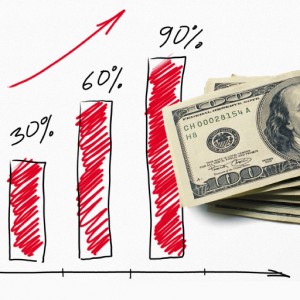This post has already been read 21408 times!
 Demand driven is not a new concept, and unfortunately, I can’t say that I invented it. But I am doing everything I can to advance the concept and pass along what I’ve learned.
Demand driven is not a new concept, and unfortunately, I can’t say that I invented it. But I am doing everything I can to advance the concept and pass along what I’ve learned.
The high-tech industry created the initial version of demand driven in the early ‘90s, when Dell redefined the process to making and delivering to customer order. Not that B2C was new, but Dell created its supply chains specifically to respond to customer demand faster than any company.
Much has changed since the early ‘90s, but much remains the same. Customers still prefer speed, low cost, and high service – why not? Once they experience that from one company, they expect it from all; and, once they experience that from most companies, they want still more.
The amazing growth of online ordering proves my following point: Companies that realize that Amazon can sell virtually anything online, and deliver it anywhere at competitive prices with high levels of service, are hard at work trying to match that. The high-tech industry is not immune, regardless of whether it is B2C or B2B. The bar is being raised every day.
What Factors Create Value?
Our joint paper with One Network, Supply Chain Priorities for the High-Tech Industry, discusses seven success factors for value creation.
While these topics – covering operations strategy, business processes, integrated planning and execution, and so on – are not new, their objectives, content, and performance indicators are groundbreaking. Moreover, the introduction of new, Cloud-based, optimization technology is changing the game for all high-tech companies that sell any type of product.
Cloud-based technologies are catching on, because of the lower total cost of ownership, increased security, adequate back-up services, and the faster, cheaper, and better qualities possible today. When a business is dealing with dynamic loads, seasonal variations, and cyclical demand (doesn’t this fit high-tech very well?), the Cloud especially gets compelling.
As we discuss in the paper, today’s volatility of demand is expected to be the “new normal” well into the future. Simply working to reduce demand forecast error is inadequate; we must have faster data on what is selling – “near real-time” is the objective – in order to minimize lead times, total supply chain costs, and chain-wide inventories.
The fundamental value and differentiating principle of high-tech companies – speed to market – is now a reality. Along with that, the transformation of “supply chains” to “demand chains” is also a reality. Providing near real-time visibility to all trading partners, through a Value Network, is step #1; the next step is to add the right applications to the visibility.
True supply chain velocity is derived from sensing a change, evaluating the impact of that change to every other point in the chain, and then responding optimally for every point in the chain. The faster this can happen, the more value is created for all supply chain partners.
We in the Tompkins/One Network team are excited about what this means for high-tech companies of all types – suppliers, manufacturers, assemblers, distributors, retailers, wholesalers, all that operate within supply chains. And, whether for replenishment, new product introductions, promotions, B2B or B2C, or normal or online orders, these new solutions are powerful.
Finally operations managers can achieve what was deemed unreachable – high-performing global supply chains with inherent optimizations, risk management, and higher levels of customer service.
Have you tried demand driven? What’s holding you back? Let me know if I can field any questions for you.
Editor’s Note: This post originally appeared on the Go!Go!Go! blog.
- Supply Chain Predictions for 2017 - February 23, 2017
- Digital Disruption: Supply Chain Planning in the Digital Era - December 12, 2016
- Brexit: What’s the Impact on U.S. Supply Chains? - July 7, 2016